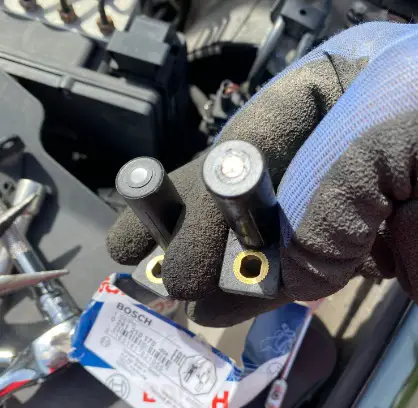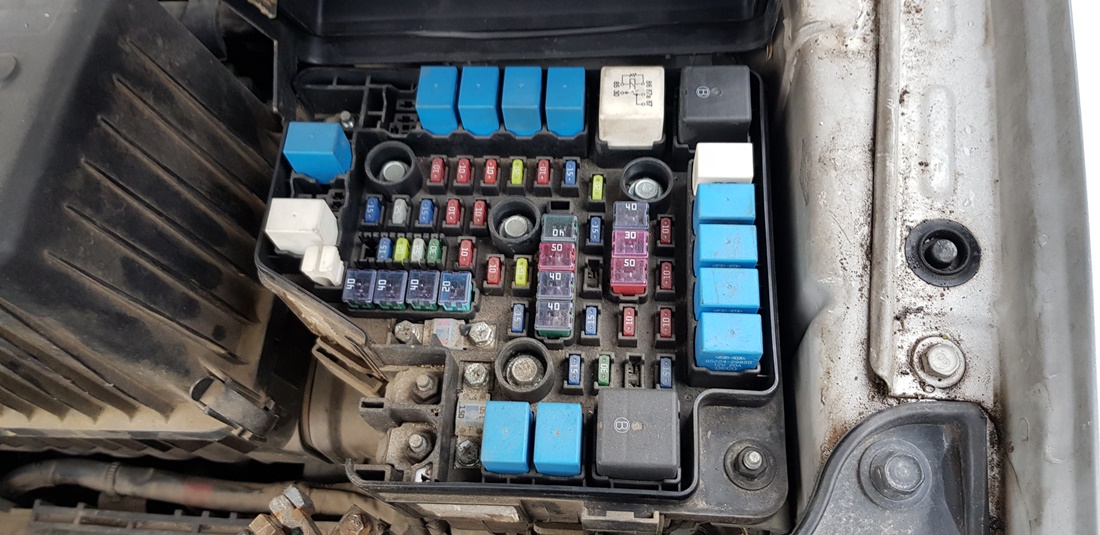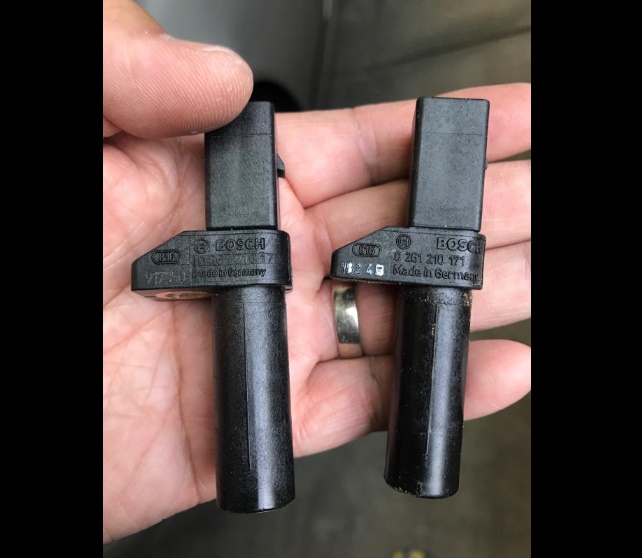Wheel bearings are a crucial part of wheel assembly in vehicles. Basically, wheel bearings allow the wheels of vehicles to rotate smoothly with minimum friction.
When in great shape, the wheel bearings hold the wheels in place and produce no noise while driving. However, when a wheel bearing goes bad, it is a completely different story.
A noisy wheel bearing is trying to tell you something. I would recommend if you do hear a noise from your bearing, just drive it home or drive it to a repair shop.
In this article, I am going to talk about bad wheel bearing noise, symptoms, and diagnosis.
- Key Takeaway
- What Is Wheel Bearing In Cars
- What Noise Does a Wheel Bearing Make When It’s Going Bad?
- How To Diagnose a Bad Wheel Bearing
- Symptoms of Bad Wheel Bearing
- Causes of Bad Wheel Bearing
- How Long Can I Drive With a Bad Wheel Bearing?
- FAQs
- Q: Can a bad wheel bearing cause ABS light to come on?
- Q: Can a bad wheel bearing cause a shaking steering wheel?
- Q: How much does it cost to replace a wheel bearing?
- Q: How long does it take to replace a wheel bearing?
- Q: Can a bad wheel bearing cause the wheel to fall off?
- Q: Can I replace a wheel bearing myself?
- Q: How long do wheel bearings typically last?
- In Conclusion
Key Takeaway
- Bad wheel bearing noise typically presents as a grinding, humming, or growling sound that increases in frequency and volume with the speed of the vehicle or when the vehicle is turning.
- To diagnose a bad wheel bearing noise, you must first determine where the noise is coming from (front, back, left, or right side). Jack the side that the noise is coming from and test the tires for play by holding them in a 3 and 9 and 6 and 12 hand position.
- Symptoms of a bad wheel bearing include an audible grinding or grating noise coming from the wheels, looseness in the steering wheel, heat near the wheel hub, the vehicle pulling to one side, and increasing noise with acceleration or as the vehicle turns.
What Is Wheel Bearing In Cars

Wheel bearings are sets of steel balls held in place by a metal ring and are an essential part of the wheel assembly that is used to connect the wheel and the axle. The wheel bearings support the weight of the whole vehicle and this is why they go bad much faster if you drive on roads with potholes and rough roads.
Ball bearings are one of the most common types of bearings used in most passenger vehicles. A ball bearing consists of a row of balls as rolling elements. They are trapped between two annulus-shaped metal pieces. These metal pieces are known as races. The inner race is free to rotate while the outer race is a stationary ball.
Bearings provide very low friction during rolling but have limited load-carrying capacity. This is because of the small area of contact between the balls and the races. They can support axial loads in two directions besides radial loads.
Depending on the application, different types of ball bearings are available such as deep groove ball bearings, angular contact ball bearings, self-aligning ball bearings, and thrust ball bearings. It also helps if you spin the tire and listen for a grinding noise.
Deep groove ball bearings

The deep groove ball bearing is the most widely used ball bearing. Trapped between the two races is a ring of balls that transmit the load and allow rotational motion between the two races. The balls are held in place by a retainer. They have very low rolling friction and are optimized for low noise and low vibration.
Angular contact ball bearings

In the angular contact ball bearing, the inner and outer races are displaced with respect to each other along the bearing axis. This type of ball bearing is designed to handle greater amounts of axial loads in both directions in addition to radial loads.
Self-aligning ball bearings

Self-aligning ball bearings have deep grooves on the inner ring, similar to deep groove ball bearings followed by two rows of balls and an outer ring. The outer ring has a concave shape and this grants the inner ring.
Thrust ball bearings

Thrust ball bearings consist of two bearing discs with raceways for the balls. These bearings exhibit low noise, and smooth operation, and are capable of high-speed applications.
What Noise Does a Wheel Bearing Make When It’s Going Bad?
When a wheel bearing starts to go bad it makes a grinding, growling, and whining type of noise. It is described as a sound same as when you stick a playing card in the spokes of a spinning bicycle wheel. A bad wheel bearing doesn’t go bad instantly. In fact, there are three stages a wheel bearing goes through before it completely fails.
A bad wheel bearing is most audible between 20 and 50 mph.
This is what a bad wheel bearing sounds like:
The first stage of a bad wheel bearing is noise. You will notice that your vehicle just sounds very different while driving. If you roll down your windows and turn off the radio, as soon as you start driving, you will hear a grinding, growling, and whining noise. The noise increases with the speed.
As you disregard the noise and continue to drive your vehicle, the wheel bearing will only go even worse. Apart from the increased noise, the wheel bearing will start to get loose. The wheel bearing is what connects the actual wheel to the axle.
A properly working wheel bearing will hold the tire in place and will allow it only to roll forward or backward. On the other hand, a bad wheel bearing isn’t holding the wheel in place as it should and often the wheel starts to wiggle in a camber (archy) direction.
If you disregard the second stage of a failing wheel bearing, stage three is a catastrophic failure. A completely failed wheel bearing can lock the tire and don’t allow it to move anymore.
This is where the wheel can separate from the axle and you can lose a wheel while driving. I really don’t need to explain how dangerous it is to drive without one tire says RepairSmith.
How To Diagnose a Bad Wheel Bearing

- Split the noise left to right, front to rear. Try to pinpoint where the noise is coming from.
- Jack up the car
- Check each tire for play. Move it back and forth and spin the tires.
- Visually inspect the tire rods
- Scan the vehicle for trouble codes. Sometimes the bad wheel bearing can trigger the ABS light.
Noise from a bad wheel bearing can be sometimes misleading. You are driving down the road and you just hear this growling and grinding noise coming from all sides. Following these steps will help you diagnose a bad wheel bearing and avoid changing the wrong part.
1. Split the noise left to right, front to rear

Determining where the noise from a bad wheel bearing is coming from can be confusing. This is especially true if you are diagnosing a bad wheel bearing for the first time. However, as the saying goes ”divide and conquer”, this is what you should do. Try getting someone with you in the car as you test-drive it. Make the person sit in the back.
While you drive, you will be able to determine if the noise is coming from the front of the vehicle, while the person in the back will be able to hear if the noise is coming from the rear. As a driver, you can really go left or right. But the person that is with you can switch positions and pinpoint the sound.
If you are unable to pinpoint the sound to the actual wheel, don’t worry. At least make sure that you are able to determine whether the sound is coming from the front or the back. This will save you from the trouble of jacking your vehicle twice.
2. Jack up the car

As I said before, determining whether the noise is coming from the front or the rear will save you the trouble of jacking your vehicle twice. So, if you have determined that the noise from the bad wheel bearing is coming from the front, jack the front of the vehicle.
Once the vehicle is jacked, support it on jack stands and block the other wheels so the car won’t roll. At some point in diagnosing a bad wheel bearing, your hand will be underneath the tire. This is why it is very important that you are certain that your vehicle is stable.
3. Check for play in the wheels

With the vehicle jacked, position yourself in front of the tire and place your hands on the left and right sides of the tire (3 o’clock and 9 o’clock positions). Shake the tire back and forth and look for any movement or play.
Sometimes you can also hear a clicking noise while you do that. If there is some play in this tire, place your hands on top and the bottom of the tire (12 o’clock and 6 o’clock positions). Shake the tire back and forth. If there is still play, this wheel definitely has a bad wheel bearing.
4. Spin the tire
Keep in mind that not all bad wheel bearings will have a play. Or, they might have a play but it won’t be very noticeable. Some of the wheel bearings that go bad actually just aren’t moving as freely as they should and are feeling gritty when spinning.
So, spin the tire as fast as you can and try to hear if there is any grinding noise coming from it. Standing in front of a spinning wheel with a bad wheel bearing will allow you to hear that growling, grinding, or metallic humming sounds.
5. Check if the tire rod is bad too

Sometimes a bad tire rod can cause noise and play in the tire. We want to make sure that it is the wheel bearing that has gone bad and not something else. This step should be done especially if you have to play in the wheel in one direction (left to right, or up to down).
Again, place your hands on the tire on the left and right sides and shake the wheel back and forth. This time, you will be looking behind the tire. If you are unable to shake the wheel and look behind the tire at the same time, place a camera and record the movement of the tire rod, the lower ball joint, and the upper ball joint. As you shake the wheel, the tire rod, lower back joint, and upper ball joint shouldn’t move.
Next, place your hands on the top and the bottom of the tire and shake it back and forth. Again, the tire rod, and the upper and lower ball joints shouldn’t move. If they move, you might not have a bad wheel bearing, or you have a bad wheel bearing, plus some other parts of the wheel assembly.
6. Scan the vehicle for codes

Just to be absolutely sure that you have a bad wheel bearing, you can scan your vehicle with an OBD scanner. However, this will work on newer vehicles that use an ABS sensor in the wheel hub bearing.
If it detects a problem with the ABS sensor it is going to throw a code on the dashboard. I would definitely do this if I saw an ABS light on my dashboard or a traction control light.
Locate the OBD port underneath the steering wheel and connect your scanning tool. The scanning tool is going to read all the faulty codes and will give you an exact report of what’s wrong with your vehicle. There isn’t a specific trouble code for a bad wheel bearing.
However, the trouble code will be associated with the ABS and if you scroll into the frequently reported fix tab, you will see that it says to replace the wheel bearing assembly.
Symptoms of Bad Wheel Bearing
- Unusual noises like grinding, clicking, or humming from the wheel area.
- Excessive or unusual tire wear.
- Vehicle pulling to one side while driving.
- Feeling of looseness or wobbling in the steering wheel.
- Vibrations or shaking in the car, especially at certain speeds.
- ABS light turns on the dashboard (since many wheel bearings now have built-in speed sensors for the ABS system).
Causes of Bad Wheel Bearing
- Normal wear and tear over time.
- Driving conditions such as rough roads or hitting potholes.
- Poor quality or counterfeit bearings.
- Improper installation or lack of maintenance.
- Overloading the vehicle beyond its capacity.
- Exposure to water and dirt that can cause rust and corrosion.
How Long Can I Drive With a Bad Wheel Bearing?
If your wheel bearing has only just begun to go bad and you are only starting to hear a whining noise, you can probably drive about 500 miles before it goes to the next stage in which the wheel bearing starts to get loose before it completely detaches itself from the axle.
FAQs
Q: Can a bad wheel bearing cause ABS light to come on?
A: Yes, a bad wheel bearing can cause the ABS (Anti-Lock Braking System) light to come on. This is because a faulty wheel bearing can affect the wheel speed sensor, which is an integral part of the ABS system. If the sensor does not receive accurate wheel speed information due to a bad bearing, it may trigger the ABS light.
Q: Can a bad wheel bearing cause a shaking steering wheel?
A: Yes, a bad wheel bearing can cause a shaking steering wheel. When the bearing becomes worn or damaged, it can result in excessive play in the wheel, causing vibrations and shaking in the steering wheel while driving.
Q: How much does it cost to replace a wheel bearing?
A: The cost to replace a wheel bearing can vary depending on the make and model of your vehicle and labor costs in your area. On average, the cost can range from $150 to $600 per bearing. It is recommended to consult with a qualified mechanic or repair shop to get an accurate estimate for your specific vehicle.
Q: How long does it take to replace a wheel bearing?
A: The time required to replace a wheel bearing can vary depending on factors such as the accessibility of the bearing, the type of vehicle, and the experience of the technician. Generally, it can take anywhere from 1 to 3 hours per wheel. However, this is just an estimate, and actual times may vary.
Q: Can a bad wheel bearing cause the wheel to fall off?
A: While it is rare for a wheel to completely fall off due to a bad wheel bearing, ignoring the symptoms and driving with a severely damaged bearing can lead to catastrophic failure, which can result in the wheel detaching from the vehicle. It is crucial to address any wheel bearing issues promptly to avoid such situations.
Q: Can I replace a wheel bearing myself?
A: If you have the necessary mechanical knowledge, tools, and experience, it is possible to replace a wheel bearing yourself. However, it is important to note that wheel bearing replacement can be a complex task that requires specialized tools and techniques. It is recommended to consult a professional or a reputable repair shop for proper diagnosis and replacement.
Q: How long do wheel bearings typically last?
A: The lifespan of a wheel bearing can vary depending on factors like driving conditions, vehicle make and model, and overall maintenance. In general, wheel bearings can last anywhere from 100,000 to 150,000 miles. However, regular inspections, proper lubrication, and timely replacement when necessary can help extend their lifespan.
In Conclusion
In conclusion, bad wheel bearing noise is a critical indicator of a potential problem that shouldn’t be ignored.
Symptoms such as unusual noises, abnormal tire wear, the vehicle pulling to one side, steering wheel looseness, and vibrations can all point toward a failing wheel bearing.
These issues may arise due to factors like regular wear and tear, harsh driving conditions, poor quality bearings, incorrect installation, overloading, or exposure to corrosive elements.
If any of these symptoms are observed, it’s essential to promptly diagnose and address the problem to prevent further damage and ensure vehicle safety.




